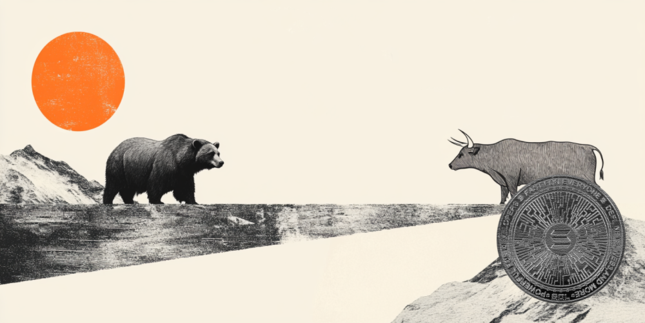Analysts at Natixis expect that on average over the year, inflation should increase by more than one percentage point in the Eurozone in 2017 (from 0.2% to 1.5%) and in the US (from 1.2% to 2.7%, before peaking at close to 3% at the end of 2017), and even more so in the UK because of sterling’s slump (expected to peak at 3%-4% six months out), but by contrast less so in Japan given the appreciation of the yen this past year.
Key Quotes
“In Q1 2017, the rebound in inflation will be confined to the direct effects of the rise in crude oil prices on consumer prices. Later, probably in H1 2018, inflation will also be fuelled by the indirect effects of the rise in energy costs on prices paid for transportation services and manufactured goods. Finally, as growth in a number of developed economies (US, Eurozone) will be lower than its potential, employment will continue to rise and wages to increase slightly more rapidly than productivity. This therefore points to another increase in unit labour costs. All these developments suggest that core inflation reached bottom last year and that the rebound in inflation, modest as it will be, will be no flash in the pan.”
“The return of inflation will have negative impacts on growth in most economies.
In particular, we expect household consumption to slow by more than half a percentage point next year in G7 countries. When it comes to household spending, the heads of expenditure likely to suffer most from the erosion on purchasing power are household equipment and domestic energy. On the supply side, the rise in the price of crude oil will dent earnings at energy-intensive companies, therefore sectors such as metallurgy, chemicals and air transport. In addition, the return of inflation could lead to a steepening of the yield curve that could negatively affect construction, whereas the impact would be more favourable on the revenues of banks.”
“The normalisation of inflation will be crucial for the fixed income market. This could trigger a normalisation of term premiums, which are abnormally low, hence lead to steepening of yield curves, in turn prompting a normalisation of monetary policies. That is why we expect the Federal Reserve to raise the Fed Funds rate a further three times in 2017 (the risk currently being tilted rather on the upside, i.e. more rather than fewer interest rate hikes).”
“As for the European Central Bank, which recently announced a QE extension until the end of 2017 (but with a reduction in monthly purchases to €60bn past March of next year) in an attempt to decouple the Eurozone yield curve from the US Treasury curve, it will probably announce a “real” tapering of its asset purchase programme in the autumn. The pace is likely to be the same as for the Federal Reserve, i.e. €10bn per month, on a pro rata basis to the assets purchased, from the start of 2018. This suggests that the QE exit will be not completed before the very end of 2018.”
“The Bank of Japan will probably sit out 2017, unless the USD/JPY pulls back below 115 for any length of time (pivot level for 76% of Japanese firms), as this would make it even harder for the central bank to achieve its inflation target.”
Information on these pages contains forward-looking statements that involve risks and uncertainties. Markets and instruments profiled on this page are for informational purposes only and should not in any way come across as a recommendation to buy or sell in these assets. You should do your own thorough research before making any investment decisions. FXStreet does not in any way guarantee that this information is free from mistakes, errors, or material misstatements. It also does not guarantee that this information is of a timely nature. Investing in Open Markets involves a great deal of risk, including the loss of all or a portion of your investment, as well as emotional distress. All risks, losses and costs associated with investing, including total loss of principal, are your responsibility. The views and opinions expressed in this article are those of the authors and do not necessarily reflect the official policy or position of FXStreet nor its advertisers. The author will not be held responsible for information that is found at the end of links posted on this page.
If not otherwise explicitly mentioned in the body of the article, at the time of writing, the author has no position in any stock mentioned in this article and no business relationship with any company mentioned. The author has not received compensation for writing this article, other than from FXStreet.
FXStreet and the author do not provide personalized recommendations. The author makes no representations as to the accuracy, completeness, or suitability of this information. FXStreet and the author will not be liable for any errors, omissions or any losses, injuries or damages arising from this information and its display or use. Errors and omissions excepted.
The author and FXStreet are not registered investment advisors and nothing in this article is intended to be investment advice.
Recommended content
Editors’ Picks

AUD/USD: Strong resistance lies at 0.6300
The marked sell-off in the US Dollar allowed AUD/USD to regain strong upside traction and reach multi-day highs in the area just below the key 0.6300 barrier at the beginning of the week.

EUR/USD: Bulls need to clear 1.0400 on a convincing fashion
In line with the rest of the risk-associated complex, EUR/USD managed to regain marked buying pressure and flirted with the area of three-week highs around 1.0430 on Monday.

Gold remains focused on all-time highs
Gold stays in positive territory above $2,700 on Monday as the improving risk mood makes it difficult for the US Dollar to find demand. Markets await US President Donald Trump's speech at the inauguration ceremony.

Solana Price Forecast: Are US traders dumping Bitcoin and XRP for SOL?
Solana (SOL) price stabilized near the $250 support level on Monday, having declined 10% from its all-time high over the last 24 hours.

GBP/USD stays defensive below 1.2200, awaits Trump 2.0
GBP/USD struggles to gain traction and trades slightly below 1.2200 in the second half of the day on Monday. Markets' nervousness ahead of US President-elect Donald Trump's inauguration drag the pair lower despite a broadly weaker US Dollar.

Trusted Broker Reviews for Smarter Trading
VERIFIED Discover in-depth reviews of reliable brokers. Compare features like spreads, leverage, and platforms. Find the perfect fit for your trading style, from CFDs to Forex pairs like EUR/USD and Gold.